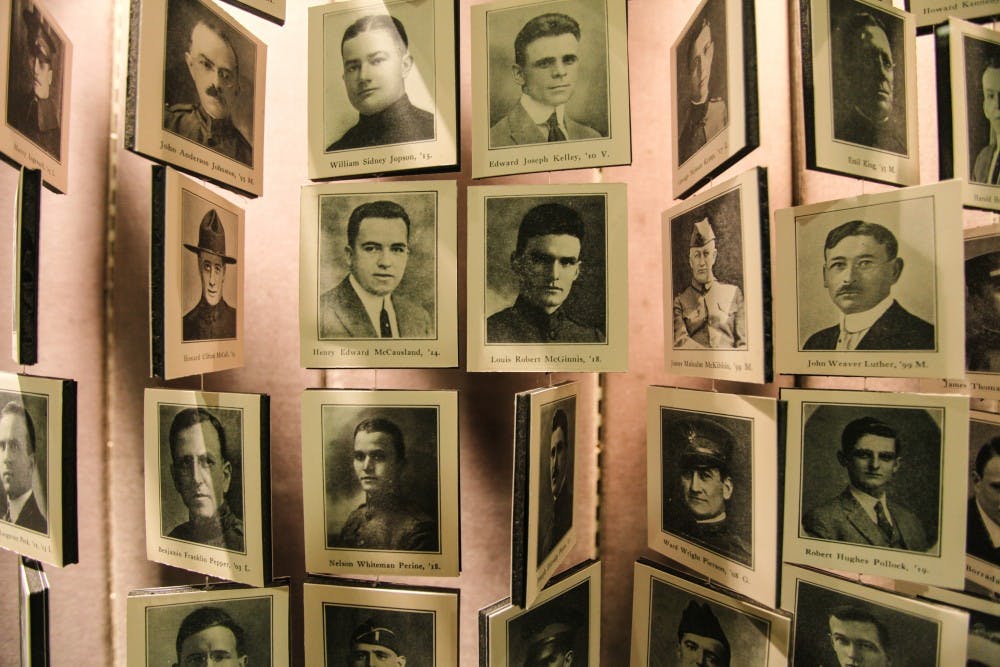Just this past week, the DP Editorial Board wrote an open letter to admitted students, inviting them to consider what they may otherwise not have regarding their college decisions. It’s a call to reevaluate Penn as students. But students aren’t the only ones. As campus and political climate shift, Penn too is reconsidering itself and its role in history with initiatives such as the Penn Slavery Project. Similarly, Penn is now examining its role, both positive and negative, in World War I in an exhibit in Van Pelt.
From now until August 3, the Kamin Gallery of the first floor in VP is exhibiting Life During Wartime: Penn at Home and Abroad During the Great War, which highlights the experience of Penn faculty, students, and alumni during the war. On its opening on April 5, the library hosted a symposium to introduce the subject matter. With artifacts and facsimiles from the Kislak Center, this collection of art and writing provides evidence of the social and political climate at Penn during the war.
Several of the pieces are demonstrations of the fervor that galvanized many to support the war effort, however possible. A whole display of posters, large and small, point towards an undying support of the war. “The Red Cross COUNTS on YOU” “Buy Liberty Bonds today for liberty today, tomorrow, and forever!” The exhibit also includes letters and sheet music to old wartime songs with similar messages, but the emphasis is clearly on the image. As one information plaque reads: “...images caught the eye, captured the imaginations, and challenged the perspectives of soldiers and civilians.” A little less than a century ago, these were the images and phrases that were flyered on locust and posted up in Houston Hall.
But beyond the propaganda, Life During Wartime also features drawings from first–hand experiences at the front. There are drawings and photographs by George Matthews Harding, a Philadelphia–born artist, architect, and a Fine Arts associate professor at Penn. Stationed at Penn’s Hospital Base #20 of Chateau–Thierry, Harding witnessed some of the heaviest fighting of the war, as is clearly shown in his sketches of the scenes. Letters from R. Tait McKenzie, Penn’s first physical education professor, and Robert Dechert, Penn alumnus 1916, also document Penn’s involvement in the war. While the two both advocated for what they called “military preparedness,” they weren’t necessarily representative of the views on the war throughout the entire Penn community. Letters and articles from Penn–affiliated persona give firsthand accounts of discrimination against minorities, as well as strong anti–German sentiments that spread wide over both the campus and the city.
Life During Wartime is an exhibit that tells Penn’s version of the familiar story we’ve all heard in our American history classes from high school. The point of the display is not in its novelty, but rather in its purpose of commemoration and reconsideration. The themes of this exhibition are nothing particularly new, but it is an important reminder to learn from history. While you are at Van Pelt this finals season, take a break from the stress–fueled Penn bubble to see this exhibit of a time long gone, but still very much relevant.

